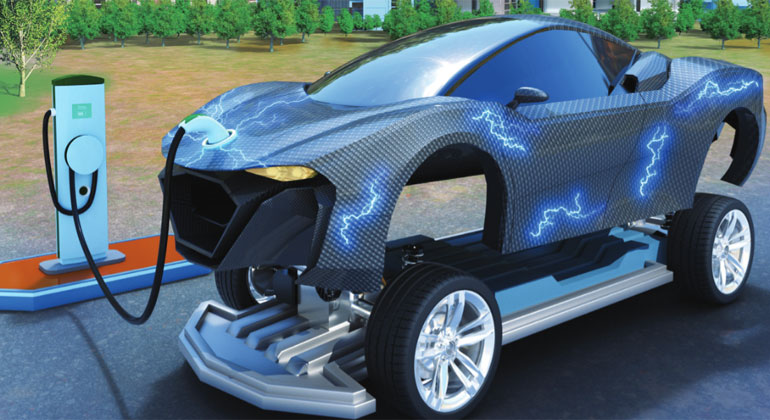E-cars: the body becomes an electrical storage device
“Super-Cap” by researchers at the University of Central Florida increases the range by 25 percent
Researchers at the University of Central Florida want to increase the range of electric cars by 25 percent with an electric storage unit that can not be identified as such. The new vehicle is also significantly lighter than the e-cars that are commonly used today with their largely steel bodies. Jayan Thomas, who leads the development team, starts with this component.
Braking energy flows into the body
The new body consists of several layers of carbon fiber composite material. They are separated from each other by a dielectric. The whole arrangement acts as a supercapacitor that can store electricity – especially the one generated during braking. The concept can also be used to provide extra power to spacecraft, drones, aircraft and other mobile systems. The materials used are non-toxic and flammable. “This is very important for the safety of passengers in the event of an accident,” says Thomas.
Despite its low weight, this composite material is at least as strong as steel. Because supercapacitors, unlike batteries, emit as much energy as possible, they enable high acceleration, but at the expense of range. The supercapacitor is charged within a few seconds if the power of the charger allows it. In addition, supercapacitors can handle ten times more charge and discharge cycles than batteries. The only downside: the storage devices, also known as “super-caps”, have a significantly lower energy density than rechargeable batteries.
Like the outer shell of small satellites
Luke Roberson, who is in charge of research and development at the Kennedy Space Center by the US space agency NASA, is primarily thinking about using the new technology in small, cube-shaped satellites. If their outer shells were made of supercapsules, the weight would be significantly reduced as a separate battery would not be needed inside. “This can save thousands of dollars per launch. In addition, the space obtained by eliminating batteries can be used to mount additional sensors and test equipment and increase the functionality of the satellite,” said Deepak Pandey, a doctoral student at Thomas.
- UCF and NASA Researchers Design Charged ‘Power Suits’ for Electric Vehicles and Spacecraft | The lightweight, supercapacitor-battery hybrid composite material provides power and is as strong as steel.
- Energized Composites for Electric Vehicles: A Dual Function Energy-Storing Supercapacitor-Based Carbon Fiber Composite for the Body Panels
QUELLE
The report was written by the editorial office „pressetext.com“ 2022 – the article may not be redistributed without permission!








